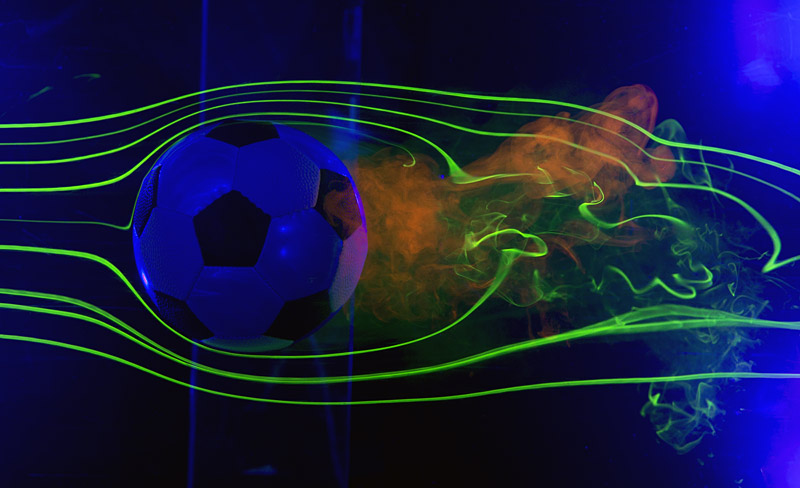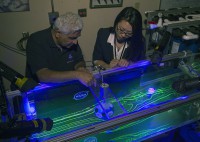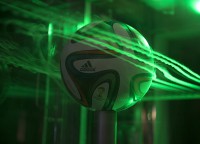A scale model of the 32-panel ball in Ames’ water channel. The green dye shows the water flow around the object. The pink dye is injected separately just behind the ball to show the position of the low-pressure zone behind the ball. (NASA’s Ames Research Center)
Home A scale model of the 32-panel ball in Ames’ water channel. The green dye shows the water flow around the object. The pink dye is injected separately just behind the ball to show the position of the low-pressure zone behind the ball. (NASA’s Ames Research Center) A scale model of the 32-panel ball in Ames' water channel. The green dye shows the water flow around the object. The pink dye is injected separately just behind the ball to show the position of the low-pressure zone behind the ball. (NASA's Ames Research Center)




